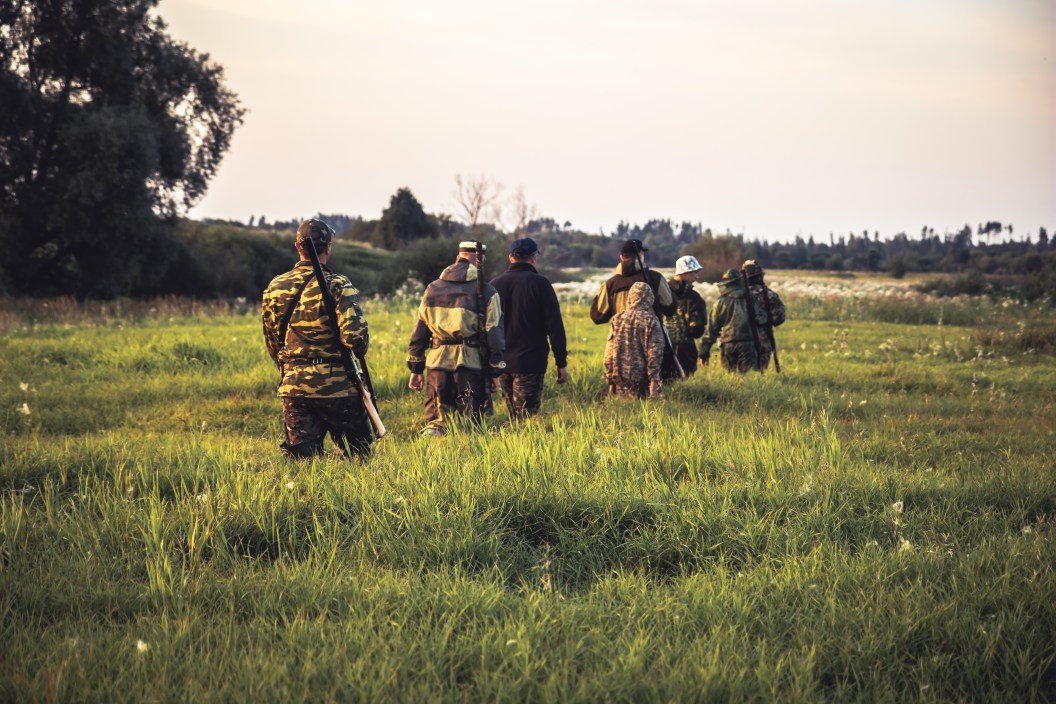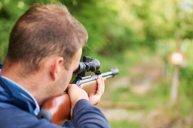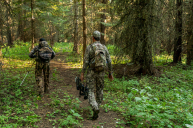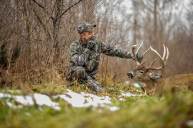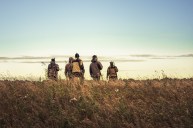Solo hunting is fairly popular nowadays, but hunting traditionally has been a group activity that it is extremely rewarding and plenty of fun. It opens up new opportunities to learn different hunting tactics, and the camaraderie you experience is irreplaceable. Still, with everyone walking around with high-powered deer rifles, you have to be a little smart about how you hunt so no one gets hurt.
Every now and again (especially at the holidays), you will see one of those news stories about a hunter who was shot by another hunter. Often, they are in the same group; and while some of these are freak accidents, a lot of them could be prevented. As a longtime hunter myself who prefers to hunt with company around, these are the main safety tips I keep top of mind whenever I am hunting with a group.
1. General Firearms Safety
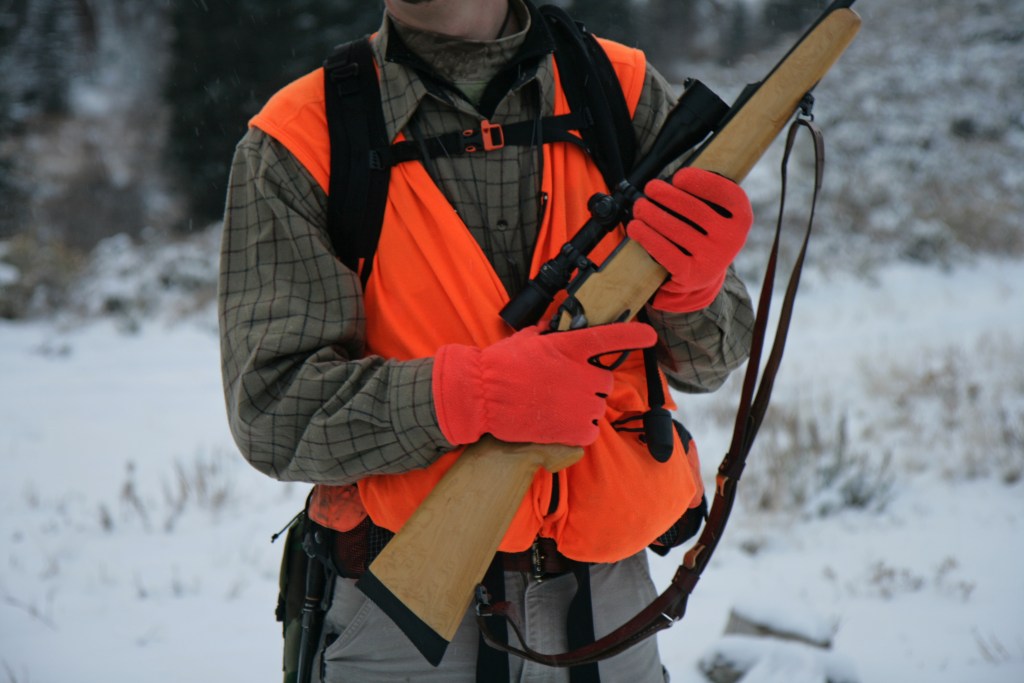
Getty Images, oneillbro
Whenever you're out hunting, you should practice the basics of firearms safety. But when you're hunting with a group, firearm safety is even more important.
Most seasoned hunters know these basics, but it's always worth doing a refresher when you get a lot of people together before a hunt. In a group, people get excited and happy—which is great—but it can make some people forget where their muzzle is while they are in the middle of a good joke.
A few basic firearm safety tips are more important than others while you are in a group. Before we get to those, though, let's brush up on the true basics.
- Treat every firearm as if it were loaded. If you pick up a firearm, assume it is loaded—especially when someone in the gang wants to show off their new rifle. If you think a firearm is unloaded, check the chamber anyway. Guys on the other side of the local gun counter will tell you that "unloaded" firearms have one in the chamber way more often than you may think.
- Keep your safety on and your finger off the trigger until you are ready to fire. Pulling a trigger on "probably unloaded" firearm is a terrible idea, especially in a group. Best practice is to avoid touching the trigger at all when you don't need to.
- Fully identify your target, and know what is beyond it. Never shoot at something you are not 100% sure is your target game. Hunters who quickly shoot at movement are the hunters who accidentally kill people. And it's not enough to know what your target is: You need to know what is beyond your target. Odds are your bullet isn't going to stop in a deer, so whatever is behind your deer should be able to take a bullet. Obvious no-nos are houses, roads, or other places that are usually populated. In a group hunting setting, this also means stand locations where your buddies are sitting. We will go over this in more detail in tip No. 3.
- Never point your firearm at something you are not willing to destroy. This is one of the most important tips because it is always violated when there is an accident. A firearm is always considered a lethal force, and no matter the caliber, and it can be expected to kill or destroy any living thing it is fired at. This rule also directly correlates with muzzle awareness, which is so important that it is our next full tip.
2. Muzzle Awareness
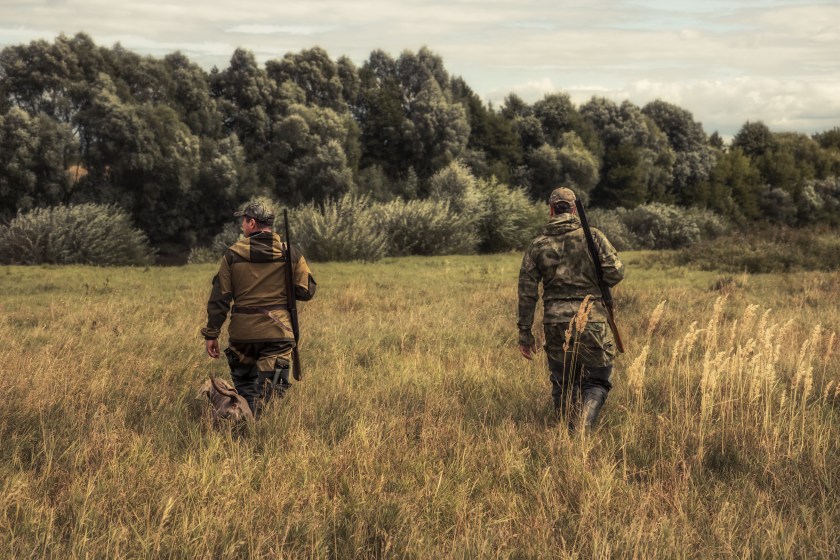
Getty Images, splendens
Muzzle awareness means knowing where the muzzle of your firearm is pointed—at all times. This is key for avoiding firearm mishaps. You never want to have the muzzle pointed at or near someone.
It also takes a conscious effort to keep your firearm pointed in a safe direction—something that not all hunters do. I probably spend more time looking at other people's muzzles and making sure they are not pointed at me than I do focusing on my own. After a while, keeping your muzzle in a safe direction becomes second nature.
The bigger your group, the more muzzles you need to worry about. Muzzle awareness is especially important when you are walking with others. There are a lot of different ways to hold a firearm while walking, and you want to make sure that the way you hold it doesn't make it point backward at the person walking behind you.
One of my favorite carries is the cradle carry. Hold the rifle like a baby with one hand, with the muzzle pointing out to your side. This is great if you have a bunch of guys walking in a semi-straight line. If people are walking all around you, you may want to carry your gun in a sling—that way, your muzzle points straight up. Lastly, you can carry the rifle in both hands with the muzzle pointed toward the ground if you are actively hunting.
3. Smart Stand Placement

Getty Images, Mary Salen
When you are hunting in a group, you don't want your treestand placements to allow you to shoot at each other. Some may think just knowing, "Oh, John is due east, so I won't shoot that way," is a fine strategy—but if a big deer comes running by, most guys are going to start shooting and forget all about poor John.
Instead, you want to be smart and pick stand locations that are far enough away and have plenty of obstacles between them, if the stands' fields of view overlap. Large blocks of woods are reliable for stopping bullets—and, of course, large hills or mountains are good, too.
My advice: Use a topo map and a satellite map when you are picking stand locations. The satellite map will be useful for identifying populated areas such as roads and houses you may or may not have seen before. The topo map will show the hills on the property, and you can use those to break up stand locations for your buddies. Of course, after you figure out the general areas where you can set people, you need to do some scouting to figure out which ones are the best. Since there is a group, plenty of that scouting falls on their shoulders, too.
4. Stay Connected
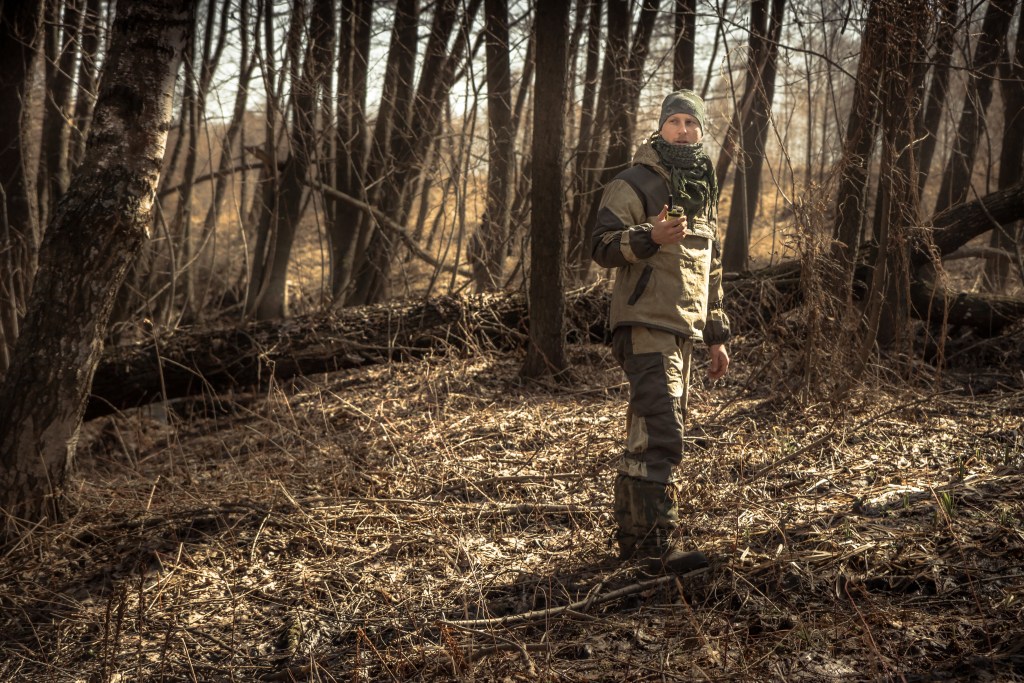
Getty Images, splendens
While a lot of old-school hunters would say that cellphones are the worst thing to ever happen to this world, the devices offer a lot of benefits to the modern hunter. Being able to instantly message your hunting buddies with important information is crucial. Any hunting group should have a group chat where everyone can stay connected and know what is going on. You can casually chat, sure, but you can also share info about the deer you just shot, or decide when you are climbing down for lunch.
Cellphones are also a great tool for safety. Obviously, you can use them to call for medical help; and the newest phones on the market have satellite connectivity for emergency calls when you don't have regular phone service. Cellphones are also great for coordinating where your buddies are going to be so you know to expect them to walk through a certain area at a certain time. Radios, too, can work for this task. Staying connected and informed keeps everyone in the group safer.
5. Be Smart About Animal Retrieval
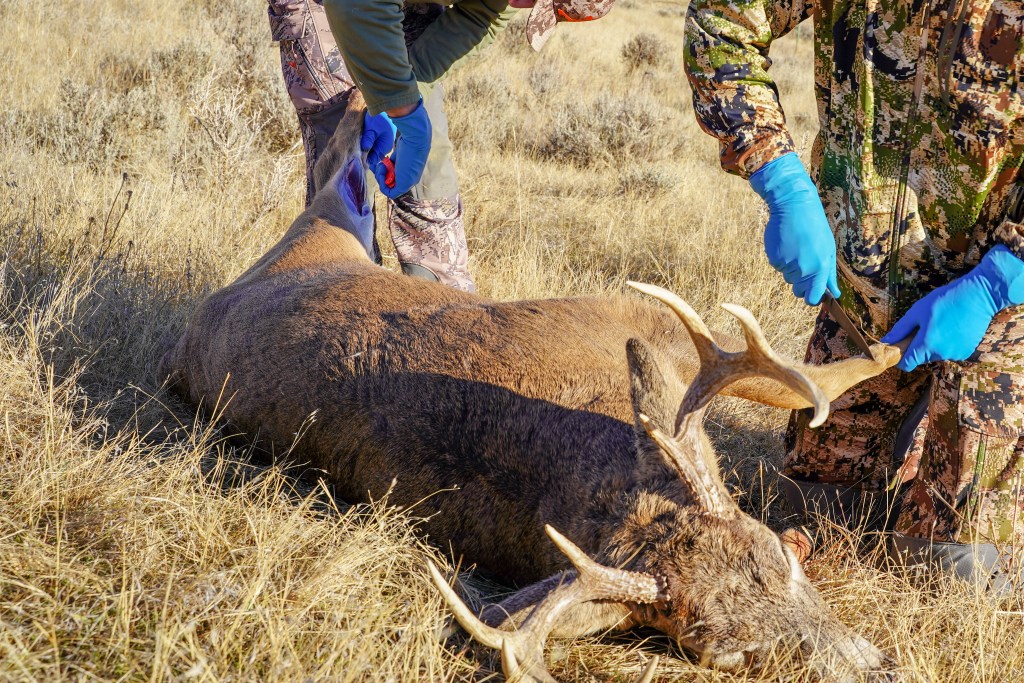
Getty Images, Melissa Kopka
Now that we have covered cellphones and staying connected, you should use them to tell your buddies after you shoot a deer. I always suggest waiting at least 30 minutes after your shot to start tracking your deer, just so you don't bump it and make it run even farther. If you do bump him, he could run through your buddies' patch of woods and mess up their hunting—plus, whoever puts the last bullet in a deer gets to claim them (at least in the groups I hunt with).
Also, just because you shot a deer and you are getting down to go track it doesn't mean your entire group has to get down and track it. So there is a good chance you will be walking through the woods while your buddies are still in the stand, and you need to make sure that everyone is on the same page about that.
You also need to make sure you are still smart about how you retrieve the animal when you find it. Just because you have some buddies with you doesn't make you invincible. A wounded deer can be dangerous, so always approach it from the rear. This gives it a clear direction to run if you walk up to it and it is a little more alive than you thought.
